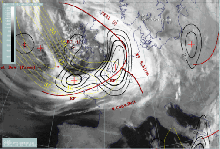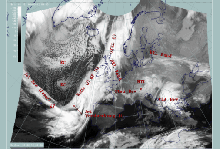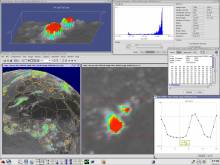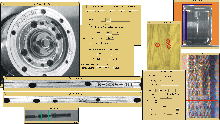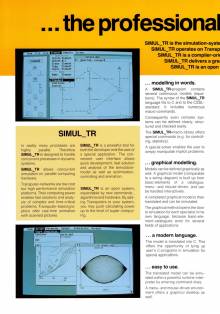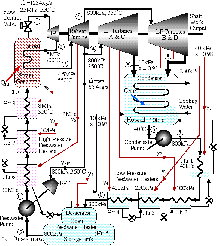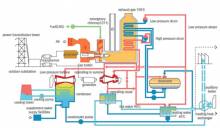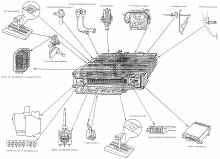GEPARD Projects
Intelligent Solutions
A project can be called innovative if no comparable system exists, and it can be classified as challenging if even the client is not sure if a solution will be possible. More than a dozen of projects carried out by GEPARD were innovative and challenging. And all of them were successfully completed (see selected projects below).
GEPARD has a long-term reputation for finding a solution to really challenging problems. This reputation has already raised a number of technically and scientifically highly interesting and innovative projects. But also 'standard' developments took benefit from the creative approach of the team.
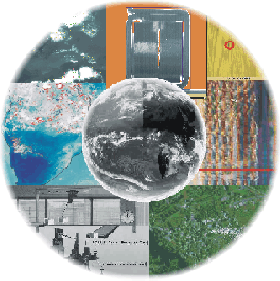
Overview
Space Contracts for ESA and EUMETSAT
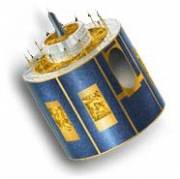
All ESA / EUMETSAT contracts described below comprise the development of various sophisticated and innovative image processing systems, implemented on parallel computers and standard UNIX systems.
Several products have been derived from the space contracts. For instance, the CineSat display software for Sun stations, and the initial version of the CineSat Nowcast system for short-range weather forecasting.
Parallel Computing Demonstrator for Space Applications
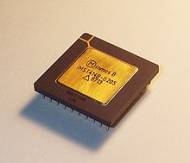
Project:
PARTECH - Parallel Computing Technical Demonstrator for Space Applications (1989)
Partner:
ESOC, European Space Operations Centre, Impuls
Description:
Transputer based prototype to demonstrate the benefit of parallel computing technology to space applications. The selected demonstrator applications included high-speed satellite image display and real-time satellite image processing.
Meteosat Image Rectification and Display
Project:
FERMI - Fast External Rectification of Meteosat Images (1990-1991)
Partner:
ESOC, European Space Operations Centre, Impuls
Description:
Development of the world's fastest parallel display system for high resolution Meteosat images (5,000 x 5,000 pixels). Interactive film-like animation facility for hundreds of these images including real-time zoom and pan and color manipulation even during running animation.
The developed TAW (Transputer augmented workstation) also included real-time Meteosat image rectification, i.e. the geographical correction of raw satellite images in the ESA ground segment before disseminating them to all national weather services in Europe and Africa. New rectification algorithms have been developed, tested, and optimized for real-time performance.
Major Achievement:
The world´s fastest digital image display system for high-resolution images, and a new real-time image resampling method that significantly improved the quality of meteorological satellite images.
First Real-time Wind Computer
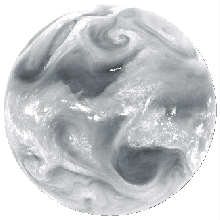
Project:
FESIP - Fast External Satellite Image Processing (1992 - 1994)
Partner:
ESOC, European Space Operations Centre, Impuls
Description:
Development of the first real-time wind computer for the European Space Operation Centre.
With every incoming new satellite image, the system computed the movement of clouds and cloud structures from the previous to the current image - the so-called Cloud Motion Winds. We developed and delivered the
- new pattern tracking algorithms to speed up computation by a factor of 16
- a statistical toolbox for the automated quality control of these winds
- additional software for several meteorological products derived from satellite data, like Upper Tropospheric Humidity, Total Column Water, Wind Trajectories, etc.
- the parallel computing hardware to run all this in real-time
Major Achievements:
For the first time ever, meteorologists had half-hourly cloud motion winds available for the full Meteosat Earth disk. The delivered system computed the information in 10 minutes (!) compared to the 4-6 computing hours of the previously existing wind processing on the ESOC mainframe computer.
The speed-up could be achieved by utilizing a specifically designed parallel computer platform (i860 / transputer). A surplus factor of 16 in speed could be gained by new and highly efficient mathematical algorithms.
The system also features a fully automatic quality control of the computed wind fields.
Meteosat-5 Lens Correction Software
Project: M5LENS - Meteosat-5 Lens Correction Software
Partner: ESOC, European Space Operations Centre
Description:
Implementation of an on-ground correction software for Meteosat-5 images being distorted by a rotating lens in the satellite´s imaging system.
Meteosat-6 Anomaly Correction - The Software Glasses
The Meteosat-6 radiometer is severely affected by an irregular anomaly of unknown sources. Two of the three image channels have their brightness levels distorted from line to line in an unpredictable way. The temperatures measured by this satellite differ up to 25% (which makes a difference of more than 15° Celsius) in comparison to ground measurements and to the second operational satellite Meteosat-5.
GEPARD was the only company to successfully propose a solution for the on-ground correction of the Meteosat-6 radiometer anomaly.
| Left half: Meteosat-6 infra-red image with a radiometer anomaly. The image is nearly ok at the South pole, but becomes brighter in the North. In this example, the defect Meteosat-6 sensor measured a sea surface temperature of only 5 degree Celsius in the Mediterranian sea during the summer season ! | Right half: Corrected Meteosat-6 Image. The correction does not affect the usual daily temperature variations. The anomaly is completely irregular. Neither the shape of the North-South anomaly nor the existence of an anomaly could be predicted from one image to the next. |
This project saved an expensive satellite mission and became famous as
The Meteosat-6 'Software Glasses'.
Projects:
M6STUDY - Feasibility Study on Meteosat-6 Anomaly Correction
M6C-ESA - Offline Meteosat-6 Anomaly Correction Software
M6C-EUM - Real-time Ground Segment Implementation of M6C
Partner:
ESOC, European Space Operations Centre and EUMETSAT
Description:
After several months of international investigation it turned out that the sources of the Meteosat-6 anomaly could not be identified, and that there was no proposal for an on-board fix of this problem.
Based on some very promising preliminary tests at GEPARD, ESA commissioned us with a feasibility study for the on-ground correction of the anomaly.
Within a few months, we took the steps from a successful offline demonstrator prototype to an operational real-time correction facility, perfectly integrated into the ESOC and EUMETSAT ground segments.
Major Achievements:
We developed algorithms and software that corrected the unpredictable radiometer anomaly of Meteosat-6 in real-time and with excellent accuracy - compared to a reference satellite.
- Accuracy: corrected Meteosat-6 images have a quality comparable to Meteosat-5
- Real-time performance: image correction is done while the satellite is still transmitting the image lines to the ground segment.
End users did not recognize any changes in product quality when operation switched from Meteosat-5 to Meteosat-6 - although the raw images provided by the satellite were severely corrupted.
Even better: The M6C correction method turned out to be a valuable quality control tool for satellite imagery. It also revealed a slight anomaly problem with Meteosat-5.
Automatic Satellite Image Analysis
Project:
ASIA - Automatic Satellite Image Analysis
Partner:
ESTEC, European Space Research and Technology Centre &
ZAMG, Zentralanstalt für Meteorologie und Geodynamik (Central Austrian Met. Office)
Description:
Algorithm research and development for the combined analysis of satellite images, numerical models, and measurement data. The approach is based on fuzzy logic methods and can also handle the offsets in time and position between the various data sources. The software demonstrator included the successful testing of this approach with Meteosat infra-red images and numerical weather prediction models.
Major Achievement:
The developed approach forms now the basic framework for a real-time system that automatically identifies weather phenomena and cloud configurations.
 Follow-up project Automatic Identification of Conceptual Models
Follow-up project Automatic Identification of Conceptual Models
More Satellite Image Interpretation
Automatic Identification of Conceptual Models
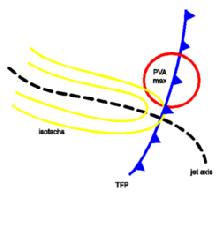
Conceptual Model: Jet Intensification
Fuzzy Fusion of Images & Models
Automatic System Classification
Project:
MISSION - Automatic Identification of Conceptual Models
Partner:
ZAMG, Zentralanstalt für Meteorologie und Geodynamik (National Austrian Met. Office)
The project has been partially funded by the Austrian Ministry of Science and Transport. More than 50% financed by own resources.
Description:
The project aimed at the automated real-time detection of so-called Conceptual Models. You can think of Conceptual Models as typical weather phenomena, as sort of 'developing life forms' in the atmosphere, like e.g. cold fronts, occlusions, jet fibres, front intensification by jet crossing, and many more.
They are described by their appearance in the satellite data, their typical features in numerical weather model parameters, their form, size, intensity, life-cycle, accompanying weather, and their potential risks to e.g. air traffic.
The MISSION system identified Conceptual Models by the joint analysis of patterns in Meteosat images, numerical weather prediction models, and observation data, following a three step approach:
- Image pattern recognition, in particular the identification of cloud textures, structures and configurations, and recognition of special cloud objects like convective cells, S-forms, waves, spiral structures, fibres, etc.
- Topology features in the 2D-parameter fields of weather forecast data, like ridges, local maxima, convex or concave curvature, …
- Combination of features derived from the various data sets in a very flexible and robust classification scheme using the basic framework for the fuzzy logic fusion of image data and numerical model data that had been developed in the ASIA project.
Major Achievements:
The system is currently in operational use at ZAMG and other weather services for the automatic real-time detection of Conceptual Models. 30 to 40 types of models are being automatically identified with every new set of satellite images every 15 minutes.
See examples on ZAMG SatManu ZAMG: Example
Two other projects contributed to this development: ASIA and CCELLS.
Identification of Stratiform and Convective Cloudiness
Project:
CCELLS - Identification of Stratiform and Convective Cloudiness
Partner:
DWD, Deutscher Wetterdienst (German Weather Service)
Description:
Two projects concerning the feasibility and prototype implementation of methods for the automatic detection of convective cloud cells (thunderstorms) and the automated description of their properties and development trends like cell height, cell top temperature, cooling rate, cell area, expansion rate, movement speed, and direction.
Results have been incorporated in the CineSat software.
Major Achievement:
The real-time detection of thunderstorm cells and in particular describing their properties and trends turned out to be extremely useful in Air Traffic Control and for early disaster warning for construction sites and tourist areas.
Rrom the satellite image alone, a flight meteorologist may see several similar cloud cells over Sicily, but with the CCELLS software he/she can instantly discriminate intensifying and decaying cells, and spot their movement and development trends, and therefore, can issue much better and more targeted warnings.
CineSat - Product Development
Project:
CineSat - Inhouse product development of a 'Satellite Cinema' including interactive and automated real-time weather analysis and short range weather forecasting.
Description:
CineSat is a powerful, high-performance, and feature-rich meteorological software suite for satellite image analysis, display, and processing. It features a real-time weather analysis and forecasting module based on satellite imagery, a high-performance and highly-configurable Automatic Product Extraction Server with a number of unique functions, and a strong and fast data display.
Highlights:
- Advanced real-time image analysis and nowcasting
- Cloud development and convective cell analysis
- Prediction of cloud motion and future satellite images
- Seamless full Earth mosaics and RGB composites
- Motion-interpolated AVI and MPEG Movies
- Universal Image Browser at breathtaking speed
- Convenient and fast handling of full size satellite images
- High-speed animation with interactive zoom and pan
- Map Editor with 60+ adjustable projections
- GIS overlays, Front Editor, Drawing Tool, Color tool, Image Converter
- Reads and converts all MSG and many other data formats
- Flexible RGB Color Composites of any satellite channels
- Advanced pixel inspection, statistics, 3D pixel view
- Full WMO station model with more than 250 user parameters
- Simultaneous zoom and scroll in multiple image windows
- Fast animation of more than a Gigabyte of image data
- Interactive zoom and pan even during running animation
- AVI and MPEG movies of selected image regions
- Automatically update your website with new animations
- Easy set-up of automated processing chains
- Integrate own scripts, macros, programs, menu items
- Server roles, multi-level and update-resistant configurations
- Open interfaces, Research Testbed
- Full 8 / 10 / 12 / 16-bit and 24-bit True Color Processing
- Highly accurate and validated methods
- Advanced data householding and clean-up, and system monitoring
- Very stable and proven system performance
CineSat had started as an in-house research and development project, initiated by customer requests for an interactive and automated high-performance satellite image interpretation system, designed to best possibly assist the forecaster's daily operational work. It soon became a valuable platform for researchers, because of its powerful display and scripting facility, and its unique nowcasting tools.
With start of Meteosat 2nd Generation in 2003, CineSat became a well appreciated standard software solution for real-time processing of and product generation from meteorological data distributed via EUMETCast.
 See CineSat's Top 300 Features
See CineSat's Top 300 Features
Remote Sensing
These remote sensing projects have been realized by GEPARD founders shortly before starting up the company. The end-user was ÖBIG, Österreichisches Bundesinstitut für Gesundheitswesen und Umweltschutz (Austrian Federal Institute for Health and Environment Protection).
ÖBIG provided the data, resources, and project management.
Forest Damage Classification from Airborne Images
Project:
FOREST-AIR - Forest Damage Classification from Airborne Images
Partner:
ÖBIG, Österreichisches Bundesinstitut für Gesundheitswesen und Umweltschutz (Austrian Federal Institute for Health and Environment Protection)
Description:
Survey and prototype implementation of algorithms suitable for the automatic classification of trees and vegetation damages from airborn infra-red images - including image pre-processing, feature extraction, image segmentation, and classification.
Forest Damage Classification from Landsat Imagery
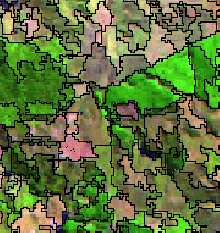
Project:
FOREST-SAT - Forest Damage Classification from Landsat Imagery
Partner:
ÖBIG, Österreichisches Bundesinstitut für Gesundheitswesen und Umweltschutz (Austrian Federal Institute for Health and Environment Protection)
Description:
Operational software for multi-spectral Landsat image classification to identify and monitor forest damages based on methods previously developed for airborne infra-red images.
We started by computing a large set of scale- and rotation-invariant image features from each spectral channel of the Landsat Thematic Mapper. These more than 70 feature fields per image were then reduced to a handful of most significant features by principal component analysis.
This selected feature set was used as input to cluster analysis and forest damage classification.
We implemented these methods on a parallel computing hardware to significantly speed up processing. This allowed to improve the classification by evaluating many more data sets.
This was one of the first applications on a parallel computing system in Europe.
Aerosole Mapping with LIDAR
Project:
LIDAR - Aerosole Mapping
Partner:
ÖBIG, Österreichisches Bundesinstitut für Gesundheitswesen und Umweltschutz (Austrian Federal Institute for Health and Environment)
Description:
LiDAR (Light Detection and Ranging) is an active remote sensing system using a pulsed laser. The reflected light returns to the LiDAR sensor where it is recorded.
At ÖBIG, airborne laser scanning data were used to map and monitor aerosole distribution and transport. The project focussed on the processing and correction of the raw data, and the generation of graphical products of the measured aerosoles.
Industrial Vision Systems
Video Analysis of Body and Limb Movement
![]()
Project:
BIAW - Video Image Analysis
Partner:
AMST, Austria Metall Systemtechnik GmbH
Description:
PC-based image analysis system for recording, storage and interpretation of video images. The system is used for the measurement and documentation of limb positions and angles in video images of human bodies.
High-speed Quality Control of Plastic Tube Prints
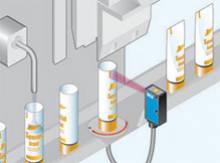

Project:
TUBEPRINT - High-speed Quality Control of Plastic Tube Prints
Partner:
Tupack Verpackungen GmbH
Description:
Feasibility study and design of a system for real-time quality control of the color printing on plastic tubes (e.g. for tooth paste tubes).
White tubes are being heated over a flame and then pressed against a high-speed printing wheel that applies color prints on two tubes per second. The main challenge in this project was that the color printings have to be controlled with an accuracy of about 1/10 mm while the tubes are deforming (cooling down) during rotation in front of a line scan camera. Per second, 36 MB of randomly deformed image data had to be controlled with pixel accuracy.
Feasibility Analysis and System Design of Vision Systems
Projects:
A number of customer specific feasibility studies and system designs for the automatic quality control of various products, like cables, wood, electronic and electric parts and devices, metallic vehicle parts, medical images, prints on product surfaces, textiles, etc.
Partners:
hema, Omron
Factory Process Simulation
'Dream Factory' at the Hannover Industrial Fair
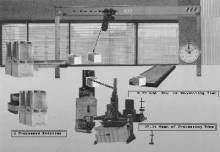
Project:
Dream Factory - a prototype demonstrator for simulating and animation of and interacting with production lines
Partners:
hema, SIMUTECH
Description:
Great echo on GEPARD´s 'Dream Factory' at the world's biggest industrial fair, 1989.
The demonstrator was built on a parallel computer with exceptional display and processing performance and
- Could be configured for different production lines consisting of conveyor belts, work places, transport crane, handling robot, forklift, different size and weight of goods, etc
- Simulated the configured production line by discrete event simulation
- Solved the differential equations to simulate e.g. the behavior of goods on the transport crane (acceleration, swinging, …)
- Accepted real-time user interaction via keyboard, joystick, and analog and digital interfaces
- Animated the production process with real-world images at 25 images per second
- Imported real-time images from a video camera and projected the live faces of spectators onto packed goods
- The user could also take control of the transport crane and move it with a joystick. The challenge was that the goods were not released from the crane before it stopped swinging.
In the following year, we extended the demonstrator hawith industrial controls and a real handling robot:
- Visitors saw the real-world image animation of the simulated production process on screen and a small real robot sitting on the table next to the screen.
- Whenever the goods on a simulated conveyor belt reached the station of the simulated handling robot, the real robot picked up a goody from the table and handed it to a visitor.
- Halting or slowing down the real robot also stopped or slowed the simulated robot on the animation display, and the goods started to pile up on the conveyor belts, until the whole production came to a halt.
This setup demonstrated the seamless integration of simulation, animation and reality, and was the start of several hardware-in-the-loop simulation projects for some well-known companies like Volkswagen, VOEST, …
Production Line Optimization for Philips Monitor Tubes
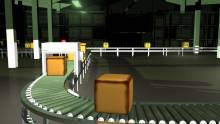
Project:
PRECOAT & BACKEND - Production Line Optimization for Monitor Tubes
Partner:
Philips
Description:
Two projects concerning modelling, simulation, animation and optimization of monitor and TV tube production lines. The client successfully restructured his manufacturing lines based on the simulation results.
SIMUL_TR - Real-time Simulator on Parallel Computers
Project:
SIMUL_TR - A general purpose, transputer-based real-time simulation system
Partner:
SIMUTECH
Description:
Product development of a general purpose real-time simulator featuring
- Continuous models (differential equation systems) combined with
- Discrete simulation (event- and time triggered)
- Implementation on parallel computing hardware with
- Accurate real-time task scheduling
- High-speed analog and digital interfaces
- Real-time and real-world animation facility with interactive features
- Recording of simulation and IO data
The simulator can react to digital and analog inputs in real-time by using external signals as input to the simulation model and outputting digital and analog signals from the model to an attached device (hardware-in-the-loop simulation).
Its application ranges from complex factory process simulations, high-performance animation display with 25 images per second, to high-speed test beds (hardware-in-the-loop simulations) for devices.
The system has been used as basis for several customer specific projects, like e.g.
Steam Power Plant Simulation and Optimization
Project:
STEAMSIM - Steam Power Plant Simulation and Optimization
Partner:
SGP, Simmering-Graz-Pauker
This project was realized by GEPARD founders shortly before starting the company. We did not manage the project, but contributed all of the optimization algorithms and related software source code.
Description:
The customer had already developed the simulator software for the major components of a steam power plant. We developed the mathematical framework and software to resolve all issues if - during the design phase of a new power plant - different components are being plugged together and simulated in order to optimize the efficiency and performance of the projected plant.
In particular, the software resolved all zero-search, optimization, graph-theoretical, and steady-state problems related to the typical circular flow of water, air and steam through the various modular component arrangements.
Hardware-in-the-Loop Simulation
Award Winning Test Bed for Automatic Gear Control in VW Cars
Project:
VW-FTS - Function Testing System for Automatic Gear Control (1991)
Partner:
Volkswagen AG, hema
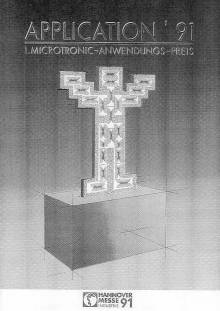
Award Microtronic Application 1991
If you drive on the highway full speed, what will happen if a signal cable breaks and your gear control does not get information about current speed ?
Will it change down to first gear ?
Or even go to parking mode at 100 miles per hour ?
Thorough testing of the device logic will protect your life.
Description:
Development of a real-time test bed for car electronics for Volkswagen. A high-level simulation language allows for the very detailed description of the environment in which the gear control device operates:
- Complex differential equation systems describe the motor behaviour,
- Discrete event driven models introduce cable breaks and other critical situations,
- Real-time interaction using mouse, keyboard, analog and digital signals
It utilizes high-performance real-time digital and analog IO-processing hardware for interaction between the simulation computer and the connected electronic device.
The system reads the device's signals, simulates the motor's and the car's reaction by solving 50 complex differential equations more than hundred times a second, and feeds the device again with analog and digital signals from simulated car sensors (Hardware-in-the-Loop).
Major Achievement:
Before having this test bed available, engineers at Volkswagen had to perform about 30,000 km of partly dangerous test drives per year to test the gear control device under all possible stress and fault situations - and again for every new component and device update.
With this powerful tool it became possible to automate test procedures, and perform more and systematic tests without affecting the safety of test drivers.
Real-time Controller Hardware for a Flight Centrifuge
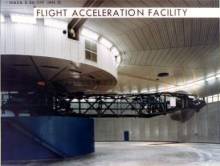
Project:
FLIGHTSIM - Real-time Control Hardware for a Flight Centrifuge
Partner:
AMST, Austria Metall Systemtechnik GmbH
Description:
Customer specific design and production of a high performance parallel computer system including fast analog and digital IOs to control a large flight simulator centrifuge.
The person sitting in the fast rotating device and exposed to very stressful acceleration is being protected by constantly monitoring her/his vital functions. The measurement data were sent to the control system, so that in case of a critical situation the centrifuge would react properly and slow down immediately in an appropriate mode.
Hardware-in-the-Loop Simulator for VOEST Alpine

Project:
VAI-SIM - General Purpose Hardware-in-the-Loop Simulator for VOEST Alpine
Partner:
VAI, VOEST Alpine Industrieanlagenbau GmbH
Description:
Real-time simulator (SIMUL_TR) with a number of analog and digital IOs that can be connected to various electronic devices and industrial controls of the customer. The environment can be specified by a fully featured standard simulation language.
Environment Pollution Modelling
Immission Simulation Campaign for a Single Power Plant
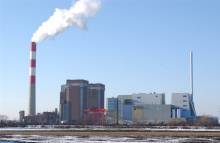
Project:
IMMIS-DUERN - Immission Simulation for Power Plant Dürnrohr
Partner:
ÖBIG, Österreichisches Bundesinstitut für Gesundheitswesen und Umweltschutz (Austrian Federal Institute for Health and Environment Protection)
This project was realized by GEPARD founders shortly before starting the company. We did not manage the project, but contributed all of the algorithms, implementations, and all related software source code including a framework for distributed computation and display on a parallel computing hardware.
Description:
Simulation software for computation of SO2 and NOx imissions caused by a single power plant, implemented on a parallel computer. The simulation models and parameters have been optimized based on more than 40.000 measurement data, and computed immissions for the various weather situations.
Design for the Parallel Implementation of an Immission Simulator
Project:
IMMIS-FZS - Concept and Design for the Parallel Implementation of an Immission Simulator
Partner:
AIT (former Austrian Research Centre Seibersdorf)
Description:
Feasibility study and system design for aerosol transport simulation on a parallel computing platform.
Immission Planning Tool for the Austrian City of Salzburg
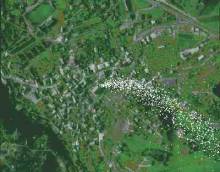
Project:
IMMIS-SBG - Immission Simulator for the Austrian City of Salzburg
Partner:
ÖBIG, Österreichisches Bundesinstitut für Gesundheitswesen und Umweltschutz (Austrian Federal Institute for Health and Environmental Protection) in cooperation with Salzburg Urban Management
Description:
High performance simulator for emission control and immission forecasting for the Austrian city of Salzburg. The project required to simulate the impact of emissions of approximately 600 single sources and of 1000 area sources on ground pollution. Their impact at 76000 points of the city´s territory was calculated for every half hour of a complete meteorological year, i.e. for 17500 meteorological situations. The computing was performed in two steps:
- First, to compute the base immission situation (data base) for a complete reference year
- Secondly and interactively, to evaluate the expected impact of a new emittent
Major Achievement:
The estimated computing time for the immission data base on a standard mainframe computer in 1988 was 2.5 years. With the delivered simulator on fast parallel computing hardware, this could be reduced to about 14 days. The impact of a new emittent could be computed within half a second. Due to this excellent performance, the system could be used as an interactive urban planning tool.

